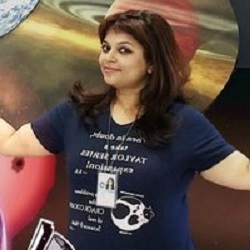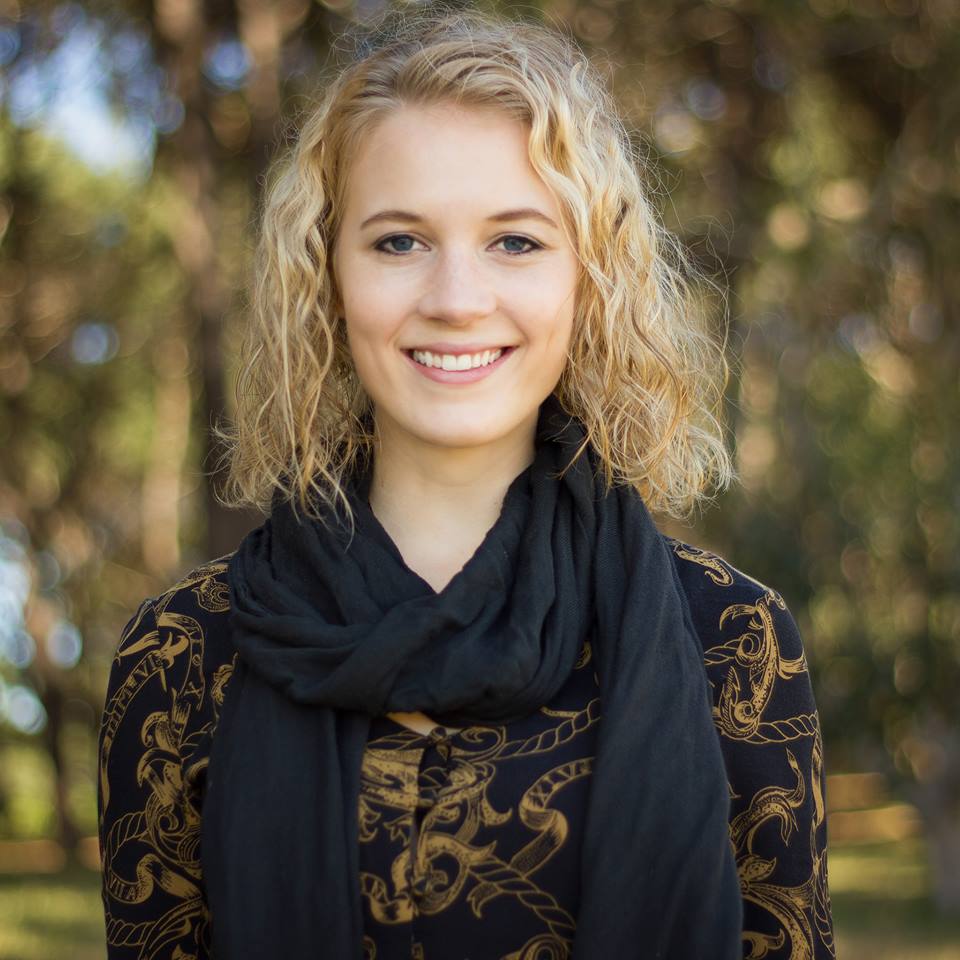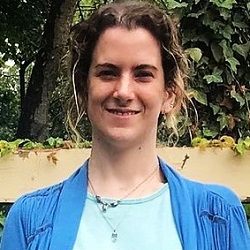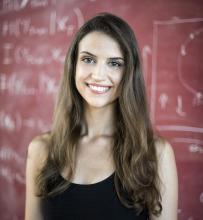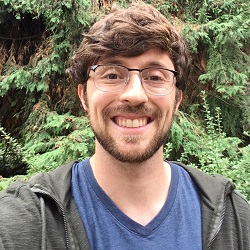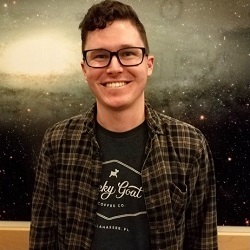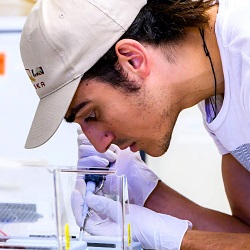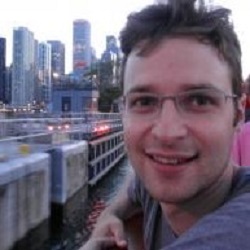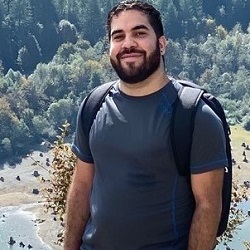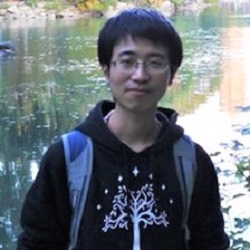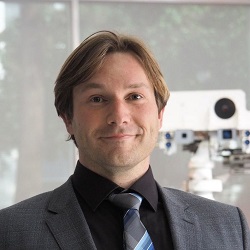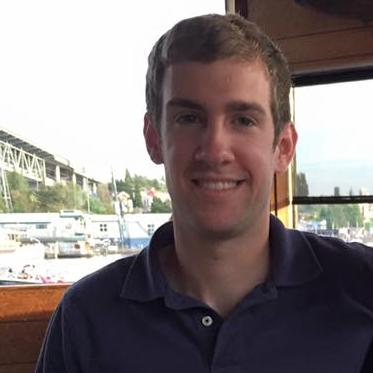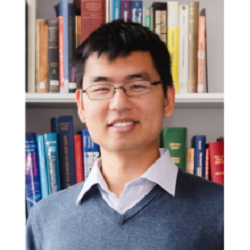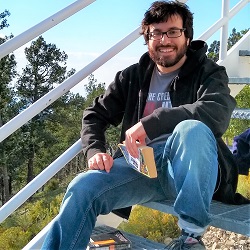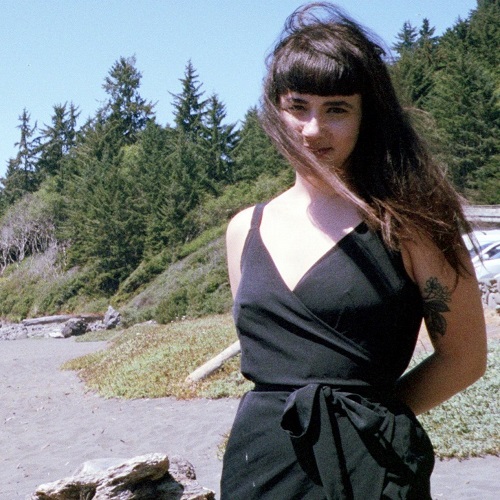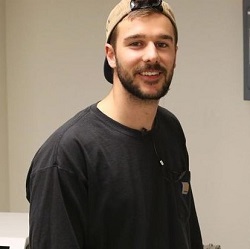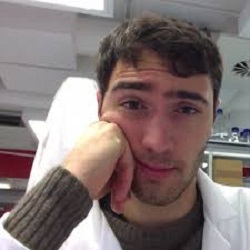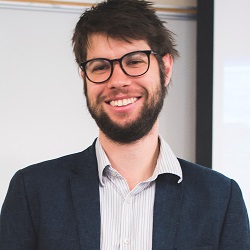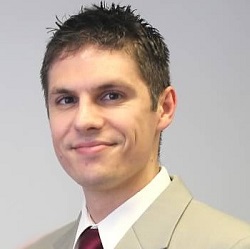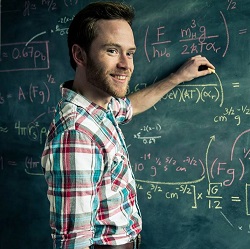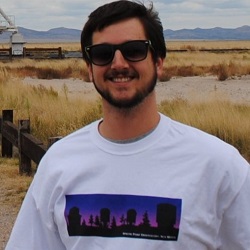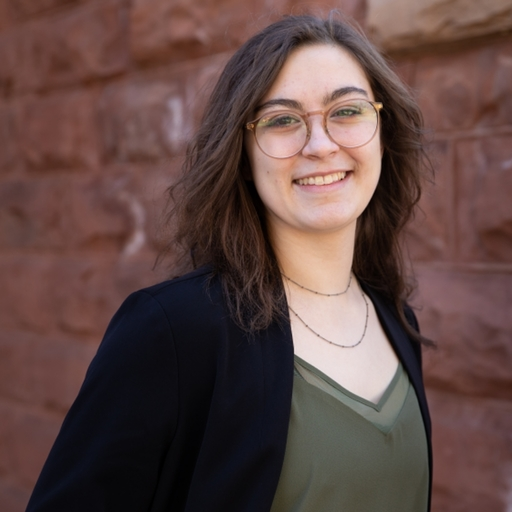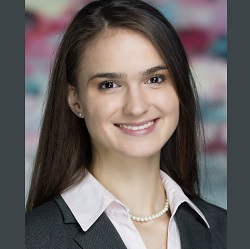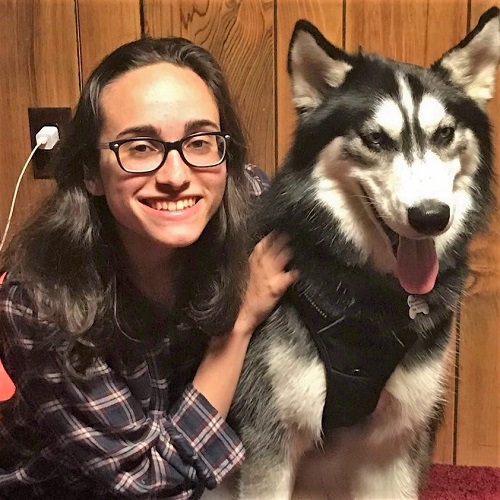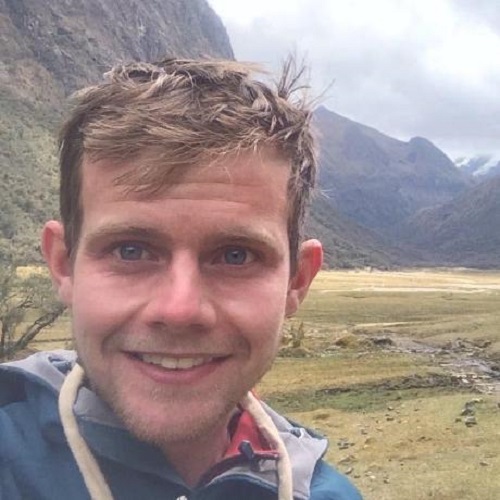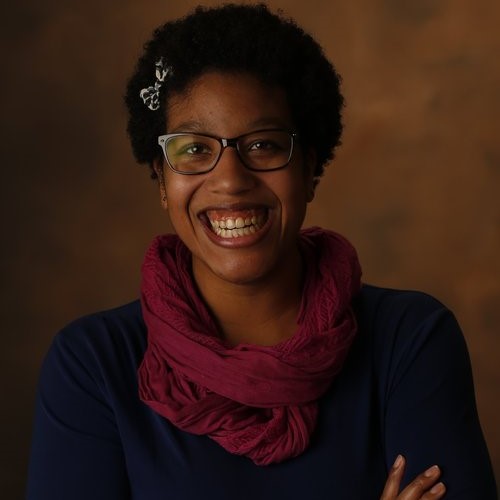Email: kbott@ucr.edu
VPL Focus: Task E
Bio:
My research combines observation, instrumentation, and theoretical approaches to characterizing exoplanets and finding realistic means to determine their habitability. My recent work has specialized in polarimetry of potentially habitable terrestrial exoplanets. I have helped develop radiative transfer code for both transits and polarimetry; am experienced in instrument design, fabrication, and testing (polarimeters and other instruments); and have observed a variety of objects (galaxies, red dwarf stars, planet hosting systems, etc.) using a variety of instruments (e.g. aperture polarimeters, IFUs, vis & IR photometers, etc.). My work has disputed the first detection of polarized light from an exoplanet, eliminated certain cloud scenarios for a hot Jupiter, provided guidelines for reliable polarized light detection from exoplanets, improved the modelling software available for radiative transfer (including polarization), and provided estimates of polarimetric signals from realistic terrestrial and super Earth scenarios utilizing climate models, with comparisons of polarimetry to other characterization methods. I am deeply aware of the needs of software development and laboratory inputs to enable the use of models in the detection and characterization of exoplanets and the icy moons of our Solar System, as well as of the observational needs for such endeavors.
Email: avb5903@psu.edu
VPL Focus: Task C
Bio:
I study ion escape from Venus, which lacks an intrinsic magnetic field. Solar radiation ionizes molecules near the top of the atmosphere. The Venusian ion environment and the magnetized solar wind both generate electric fields, which can accelerate ions away from the planet. My work addresses the energy deposition associated with localized plasma wave transport across the solar wind shock region into Venus’s atmosphere.
Email: jadecheclair@uchicago.edu
VPL Focus: Task D
Bio:
I am developing statistical habitability tests we could use with future direct imaging instruments (LUVOIR and/or HabEx). In particular, I am interested in ways to test the concept of the habitable zone and its boundaries using large samples of exoplanets. Currently, I am working on how we could test for a functioning silicate-weathering feedback on habitable exoplanets. My goal is to determine the feasibility of those statistical tests, by exploring how many exoplanets we would need to observe in order to conduct them given observational constraints.
A large part of my work also focused on studying the climate of potentially habitable tidally locked planets, which may be common around M-dwarf stars. Particularily, I looked at the Snowball bifurcation on tidally-locked planets.
Email: zrcohen2@u.washington.edu
VPL Focus: Task C
Bio:
I’m interested in the role of primitive membranes during the origin of life on Earth. My research focuses on the idea that membranes could act as organizing centers for other prebiotically available biomolecules (like amino acids), and potentially catalyze their polymerization. Unlike many other theories for the origin of life, this model suggests a mechanism for the co-localization of all the major components of life, right from the earliest stages of protocell formation.
Email: mcurr@uw.edu
VPL Focus: Task A, Task E
Bio:
Email: cdavis45@uw.edu
VPL Focus: Task C, Task E
Bio:
Email: russell.deitrick@gmail.com
VPL Focus: Task C
Bio:
I work on the dynamics of exoplanets and star systems, and also do a bit of climate modeling to understand how habitability can be impacted orbital evolution. I work with other VPL members: Rory Barnes (my dissertation advisor), Cecilia Bitz, Thomas Quinn, Victoria Meadows, John Armstrong, Rodrigo Luger, and Sean Raymond. I’m currently developing a model, with Rory Barnes, Rodrigo Luger, Tom Quinn, Peter Driscoll, and David Fleming, to couple the myriad of physical processes which affect planetary evolution. We are using this model to study the habitability of planets like Proxima Centauri b.
Email: hdelgad9@uw.edu
VPL Focus:
Bio:
Email: fengding@seas.harvard.edu
VPL Focus: Task A, Task C
Bio:
I am interested in exploring diverse planetary climate states by building simple models. Currently, I am working on the climate in condensible-rich atmospheres and the implication for habitability of exoplanets.
Email: dflemin3@uw.edu
VPL Focus: Task C
Bio:
As a member of the UW eScience Institute’s Integrative Graduate Education and Research Traineeship (IGERT) in Big Data and Data Science, I work on dealing with the large parameter space required to accurately model exoplanet systems using the code VPLANET (see Barnes et al. 2016). The massive parameter space afforded by VPLANET’s inclusion of numerous physical modules ranging from atmospheric escape to orbital dynamics necessitates the use machine learning techniques to analyze the output of a large number of simulations and to intelligently traverse this parameter space. I am particularly interested in the application of machine learning techniques to wrangle this large parameter space to draw inferences about exoplanet habitability and understand the underlying physical processes that influence habitability.
Email: gaopeter@berkeley.edu
VPL Focus: Task A
Bio:
I am currently a 51 Pegasi b Postdoctoral Fellow at the University of California, Berkeley. My research focuses on aerosols and chemistry in planetary atmospheres within and beyond the Solar System.
I recieved my PhD in Planetary Science from Caltech, where I worked on modeling the clouds and hazes of Venus, Titan, and Pluto, and the atmospheric evolution of terrestrial worlds orbiting M dwarf stars. After graduation I spent a year at NASA Ames Research Center, where I continued my journey into the study of exoplanet atmospheres.
Email: rodolfog@uw.edu
VPL Focus: Task C
Bio:
Email: samroseg@uw.edu
VPL Focus: Task E
Bio:
I am a PhD student in Astronomy and Astrobiology at the University of Washington. As a member of the Virtual Planetary Laboratory, I am exploring how we will interpret spectral observations of terrestrial exoplanets with future instruments. In preparation for upcoming transmission or direct imaging missions, I am particularly interested in developing robust frameworks for interpreting the detection of biosignature gases.
Email: mkipp@caltech.edu
VPL Focus: Task B
Bio:
I’m a Postdoctoral Fellow in the Division of Geological & Planetary Sciences at Caltech. My research involves using geochemical tools to unravel the co-evolution of life and its planetary environment across our planet’s history. The topics I study range from the oxygenation of the atmosphere & ocean to the evolution of major nutrient (N & P) cycles to recent climatic perturbations.
Email: koehlerm@uw.edu
VPL Focus: Task B
Bio:
I’m a biogeochemist, exploring the co-evolution of life and environments on the early Earth! My DESKTOP background is a leafy seadragon.
Email: jkt@ucsc.edu
VPL Focus: Task A, Task B
Bio:
I am a planetary scientist and astrobiologist from New Zealand, currently living in San Jose. You can read more about my scientific background here. I am a theoretician, and so the pictures below are thoroughly unrepresentative of my day job!
Email: alinc@uw.edu
VPL Focus: Task C, Task E
Bio:
Andrew is a graduate student pursuing a dual-title Ph.D. in Astronomy & Astrobiology working with Professor Meadows on exoplanet atmospheres. Currently he is working on modeling habitable and uninhabitable terrestrial environments around M dwarf stars by enhancing the new VPL 1D climate model (intially developed by Dr. David Crisp and Dr. Tyler Robinson) and merging it with atmospheric chemistry.
During summer of 2015, Andrew measured the pure rotational spectra of the rare stable isotopologues of Titanium Monoxide (TiO) at the University of Arizona using the Ziurys group direct absorption millimeter wave spectrometer and their Fourier Transform microwave spectrometer. This required melting or laser ablation of high purity titanium with the presence of oxygen to form vapor-phase TiO. This is relevant for astrophysics because TiO is a potential nucleation particle for the formation of interplanetary dust and is potentially a measure of the nucleosynthetic processes in the late-stage evolution of massive stars.
During summer of 2014, Andrew worked with Dr. Aki Roberge at NASA/Goddard Space Flight Center on the Haystacks project for simulating exoplanet observations by working on the code for generating a high-resolution spectral image model of the Solar System. High-fidelity planetary system spectra, including the star, the planets, and the effects of dust, are important in understanding the requirements for future observing missions under development.
Email: rodluger@gmail.com
VPL Focus: Task E
Bio:
I am a postdoctoral fellow at the Centerfor Computational Astrophysics in New York City, working on finding novel ways to discover and characterize exoplanets. I am broadly interested in exocartography, astrobiology, systematics modeling, & general analytic techniques for astronomy. Outside of the office I love to hike, cycle, swim, craft lattes, faulty parallelism, and Oxford commas.
Email: jlustigy@uw.edu
VPL Focus: Task E
Bio:
My research revolves around the central theme of extracting physical insights from astronomical observations of terrestrial exoplanets. From the planets in the Solar System we know that planets can be rich with complexity. But like the study of stars, exoplanets are (at best) point sources of light. That is, all light from the planet falls onto a single pixel of a telescope CCD. To learn about the underlying nature of terrestrial exoplanets we must carefully examine that one pixel.
Email: suissa@uw.edu
VPL Focus:
Bio:
Email: wogan@uw.edu
VPL Focus: Task B, Task D
Bio:
Nick is a graduate of the University of Oregon where he majored in Physics
His past research has focused on Electromagnetic geophysics, Seismology, and Geodynamics and his future research interests include thermodynamics and disequilibrium biosignatures
In his free time Nick enjoys climbing mountains and then skiing down them! And you might find this interesting, but Nick has never tasted Pepsi or Coke.
Email: miquai@uw.edu
I am a postdoctoral research associate in Professor Victoria S. Meadows‘ group in the University of Washingtonʼs Department of Astronomy, the UW Astrobiology Program, and the NASA NExSS Virtual Planetary Laboratory. My primary scientific interests are planetary atmospheres, habitability, biosignatures, and the emergence of life. I am also co-authoring a revised edition of the textbook Astrobiology: A Multidisciplinary Approach with Professor Jonathan Lunine. My other passions include photography, writing, public speaking, graphic design, and playing a variety of team sports. I host a podcast called Strange New Worlds, which examines science, technology, and culture through the lens of Star Trek.
VPL Focus: Task A, Task C
Email: Amber_Young@nau.edu
VPL Focus: Task A
Bio:
As a Master’s student at Fisk, I studied the potential biosignatures of the Martian atmosphere using computational modeling techniques. I completed the Master’s Phase of the Bridge Program in June 2019, and am now a graduate research assistant at Northern Arizona University where I study the potential biosignatures of exoplanets using atmospheric modeling.
